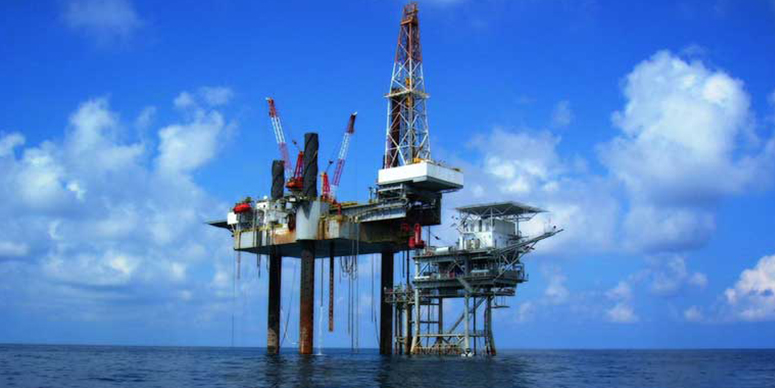The Cantarell Field was discovered in 1978 in offshore Mexico waters. Commercial production began in 1979 and continues today. In reaction to reservoir pressure decline, a study was conducted by Pemex, the Mexican national oil company, to determine the most cost effective way to increase reservoir pressure and arrest the production decline. After looking at several alternatives, land-based cryogenic nitrogen generation was chosen as the best and most cost effective solution. Nitrogen injection began in 1980 and continues today in the Cantarell Field.
Introduction
The Cantarell Field was first discovered approximately 85 kilometers offshore from Ciudad del Carmen, Mexico in 40 meters of water. The field is the sixth largest in the world, originally containing 32 billion barrels of oil. The field began production in 1979 and saw rapid development, with production reaching 1 million barrels per day in 1981. Because of the large number of wells being drilled, production stabilized in the 1.1 million barrels per day range.
The Cantarell Field is an anticline that is oriented Northeast-Southwest and covers 162 square kilometers. It is composed of five separate reservoirs: Akal, Nohoch, Kutz, Chac, and Sihil. Akal is the largest, with an estimated 30 billion barrels of oil originally in place. The top of the Akal reservoir is approximately 1,500 meters subsea.
Reservoir lithology is primarily a calcareous dolomite with additional dolomitized breccia. The crude oil in the reservoir is 19-22 American Petroleum Institute (API) and is considered heavy crude. The oil zone is approximately 1,000 meters thick. The reservoirs are fractured with permeability ranging from 1 millidarcy (md) to more than 1 Darcy. Porosity is 8 percent on average and water saturation is 21 percent. The Southeastern part of the Akal reservoir has an active water drive.
By 1996, the reservoir pressure had declined to about 1800 psi, or 53 percent of the original reservoir pressure of 3,800 psi. Pemex conducted a study that concluded a significant amount of oil would be left in the reservoir unless the pressure was increased.
The study considered using fluid injection to increase reservoir pressure. Flue gas from turbines, CO2, water, natural gas and nitrogen were all studied for the injected fluid.
After extensive analysis, including economic modeling, Pemex concluded that nitrogen injection made the most economic sense.
Nitrogen was not a new, untested technology. Nitrogen injection into oil and gas reservoirs has taken place in many parts of the world over the last years.
Several nitrogen projects were active in the United States Gulf Coast area during the 1970s, and the 1980s saw pressure maintenance projects using nitrogen in the Wyoming Overthrust Belt area of southwest Wyoming. Additionally, the Jay Field in Florida has been a very successful nitrogen injection project.
Using cryogenic nitrogen at Cantarell provided many advantages. First, nitrogen is inert and does not require special metallurgy when injected or produced, unlike CO2 or flue gas. Nitrogen is also readily available as a component of the air. A cryogenic nitrogen plant separates the nitrogen from air’s other components and produces a nitrogen stream that is 99.9 percent pure.
Because of nitrogen’s higher formation volume factor, less nitrogen is required to achieve the same pressure maintenance benefit as CO2 or natural gas. And because of the large quantities of gas required, it is beneficial that nitrogen can be produced much more economically than either natural gas or CO2.
Nitrogen Injection Plant
Once nitrogen was identified as the best option, new studies were conducted to determine the size and location of the plant. The studies recommended that the plant be onshore with pipelines run to the offshore platform for nitrogen delivery. The site of the plant was chosen to be in the Atasta area, Campeche, about 30 kilometers west of Ciudad del Carmen, Mexico.
The plant was originally designed to have four 10,000 tons per day (TPD) cryogenic nitrogen modules. Each module was capable of producing 300 million standard cubic feet per day (MMCFD) of nitrogen. The produced nitrogen contained less than 10 parts per million of oxygen.
The incoming air is chilled and dried using a molecular sieve. The air is then passed through heat exchangers where it is cooled even more and the nitrogen is separated in a cryogenic cycle. Cryogenic separation generally leads to nitrogen recoveries in excess of 90 percent. The waste stream is vented to the atmosphere.
Each air separation unit (ASU) has dedicated air compressors and nitrogen compressors. All stages of compression require approximately 500,000 horsepower.
A cogeneration facility supplies power to the project. Three cogen units each supply 75 megawatts (MW) of power. The facility uses natural gas supplied by Pemex as fuel. Two nitrogen injection pipelines run from the plant to the Akal “C” offshore platform.
Construction of the facility began in 1998. Pemex chose a model for a build, own, operate plant (BOO), which means the same company constructed and continued to operate the plant.
Thanks to favorable response, another cryogenic module was added in 2004. The module is the same size as the existing modules and brings total nitrogen injection capacity to 1,500 MMCFD. This module was added to help maintain the pressure in the nearby Ku-Maloob-Zaap Field (KMZ). An additional 55 MW cogeneration plant was also added in 2004.
EOR Project
Nitrogen injection began in the spring of 2000. The initial injection volume was 300 MMCFD. By the end of 2000, all four cryogenic nitrogen modules were online and injection had increased to 1,200 MMCFD.
Initially the nitrogen was injected into the gas cap in seven new injection wells that were drilled and completed in the Akal reservoir. The produced gas was monitored for nitrogen, and its concentration was logged and documented. The response to the nitrogen injection has also been monitored by pressure measurements, gas-oil contact movement analysis and production response.
The production response began not long after injection, and oil production peaked in 2004 at 2.15 million barrels of oil per day from 220 production wells. At this time the field was the second largest producing field in the world, behind the Ghawar Field in Saudi Arabia. Oil production did not stay at this rate for long before it began a steep decline due to gas and water breakthrough and coning problems in the near wellbore area of the producers. Lack of surface production capacity meant that after breakthrough, the wells were either shut-in, had the production curtailed or had workovers to mitigate breakthrough effects. Current production is approximately 400,000 barrels of oil per day.
Even with the well management issues, the additional production response from the Cantarell nitrogen inject project has been excellent. Field production to date is nearly 44 percent of the original 30 billion barrels of oil, and the nitrogen EOR project is estimated to add between 2.5 and 3.0 billion additional barrels of oil (7 to 9 percent of the original oil in place).

 石油圈
石油圈

